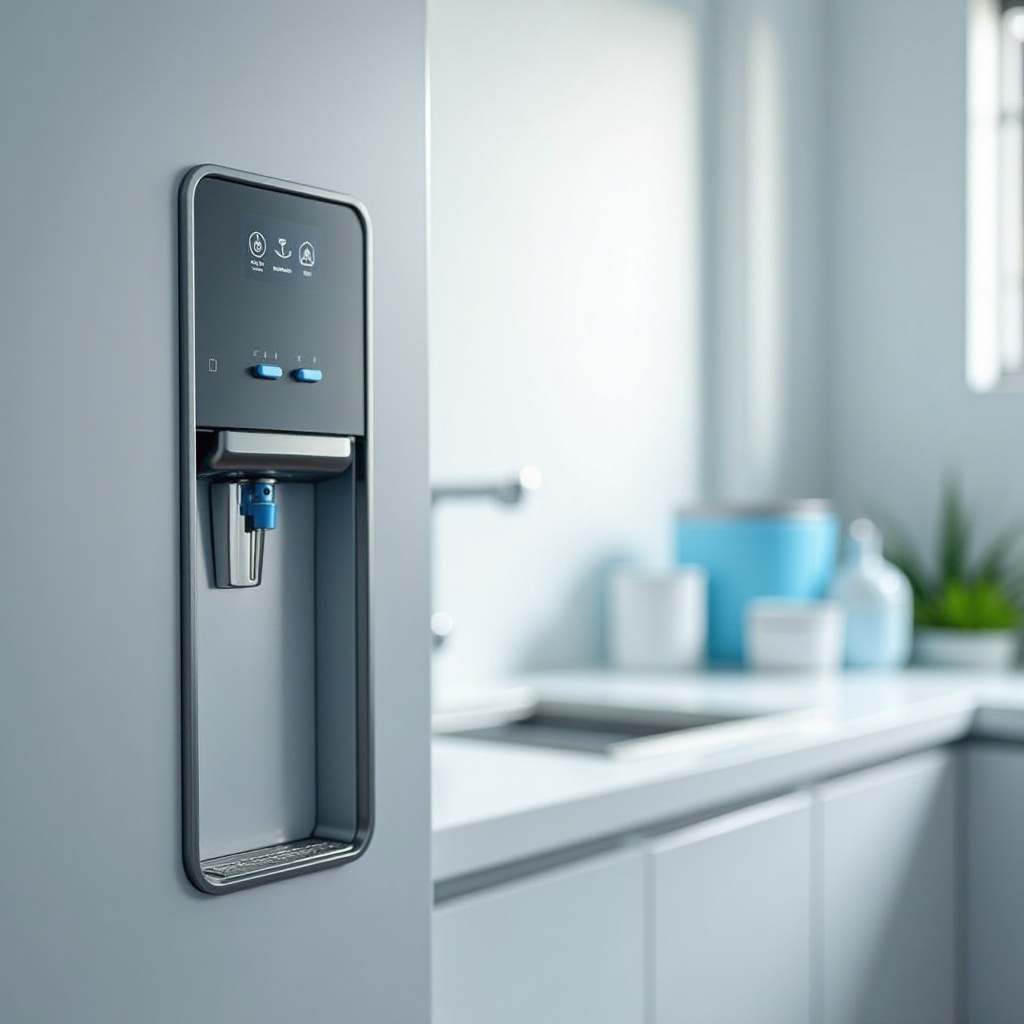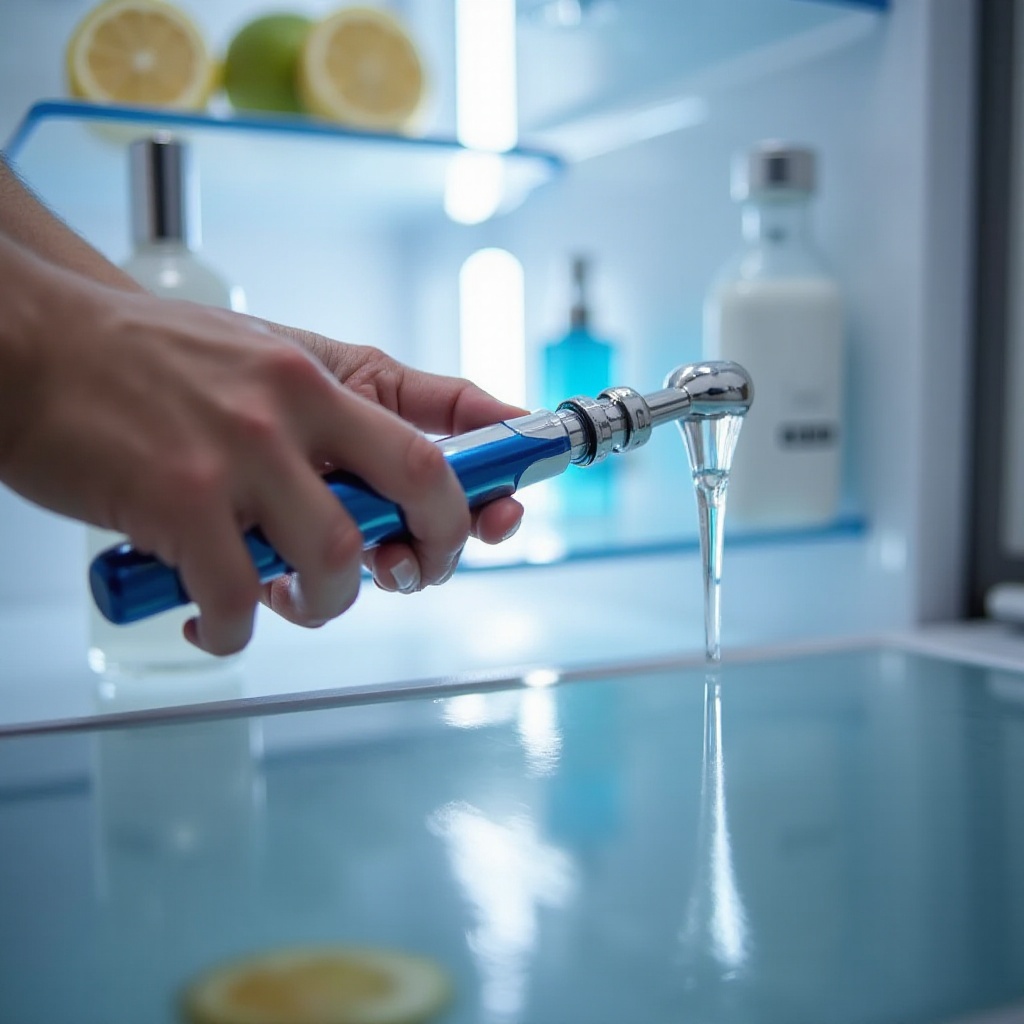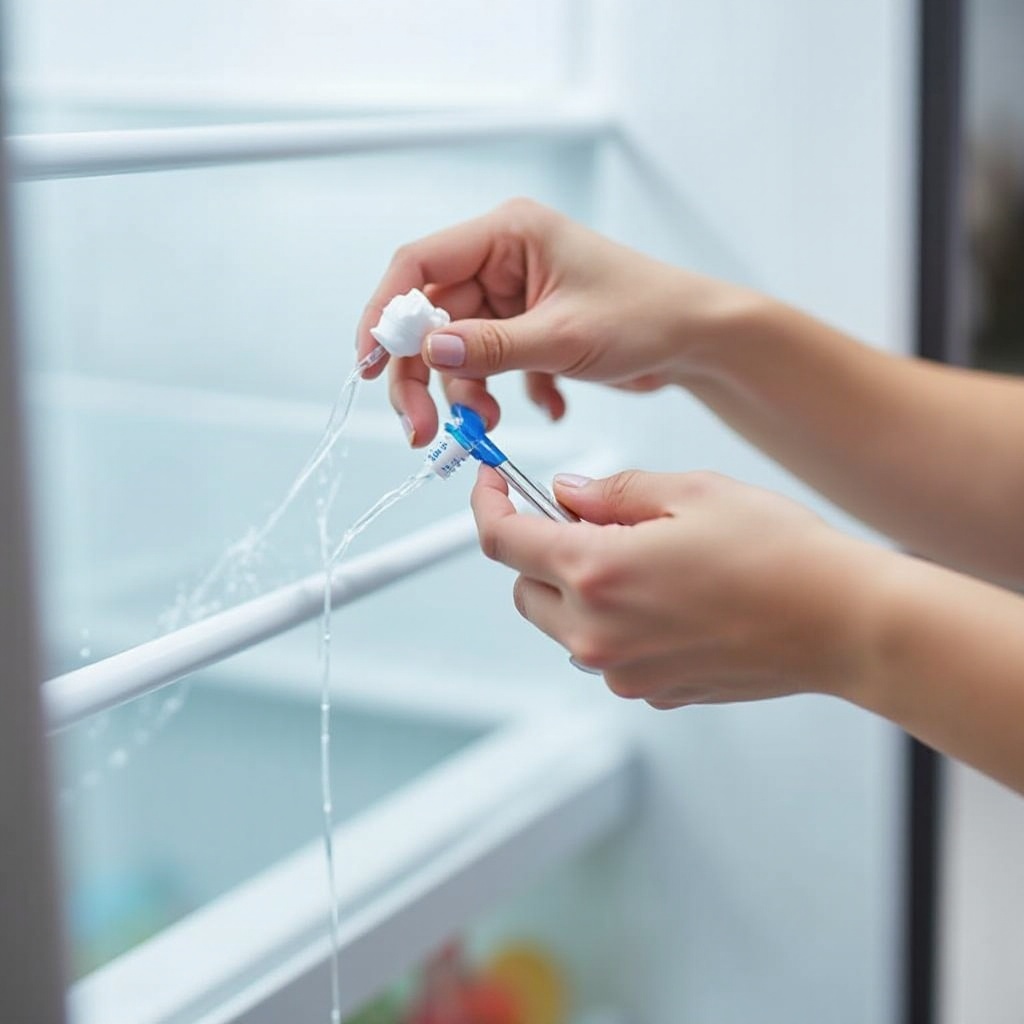Introduction
Maintaining a clean refrigerator water line is essential for ensuring safe and fresh water for you and your family. Over time, water lines can accumulate mineral deposits, mold, and bacteria, which can affect the taste and quality of your water. This guide will walk you through the importance of cleaning your refrigerator water line, the tools and materials you’ll need, and provide a detailed step-by-step cleaning process. Additionally, we’ll share tips on keeping your water line clean and troubleshooting common problems.

Why Cleaning Your Refrigerator Water Line is Essential
Regularly cleaning your refrigerator water line is essential for several reasons. First and foremost, it helps maintain the health and safety of your drinking water. Contaminants like mold, bacteria, and mineral deposits can build up in the water line and affect water quality. Drinking contaminated water can lead to health issues, such as gastrointestinal problems.
Moreover, a clean water line ensures that your water tastes fresh and clean. Mineral buildup and other impurities can alter the taste of your water and ice, making it less enjoyable to consume. By regularly cleaning the water line, you can maintain the optimal taste of your drinking water.
Lastly, regular cleaning of the water line can extend the lifespan of your refrigerator. A clogged or dirty water line can put additional strain on your refrigerator's water dispenser and ice maker, potentially causing damage over time. Regular maintenance helps keep your refrigerator functioning efficiently and prevents costly repairs.
Maintaining a clean water line doesn't just ensure the health and taste of your water but also contributes to the overall longevity and proper functioning of your refrigerator. With the understanding of these benefits, let's move on to the tools and materials needed for the task.

Tools and Materials Needed
Before you begin cleaning your refrigerator water line, gather the necessary tools and materials. Here is a list of items you’ll need:
- A bucket or large bowl
- A screwdriver
- A clean cloth or sponge
- White vinegar or a commercial water line cleaning solution
- A small funnel
- A wrench (if necessary)
- A towel to catch any spills
Ensure you have all these supplies on hand before starting the cleaning process to make the task more efficient.
Having these tools ready will streamline the cleaning process. Now, let's move on to the step-by-step cleaning method.
Step-by-Step Cleaning Process
Cleaning your refrigerator water line involves several steps. Follow this comprehensive guide to ensure your water line is thoroughly cleaned:
1. Turn Off the Water Supply and Power
Start by turning off the water supply to your refrigerator. You can usually locate the shut-off valve behind the refrigerator or under the sink. Turn the valve clockwise to cut off the water supply. Next, unplug the refrigerator from the power source to ensure safety during cleaning.
2. Locate the Water Line
The water line is usually at the back of the refrigerator, connected to the water inlet valve. Consult your refrigerator’s user manual if you’re unsure about its exact location.
3. Disconnect the Water Line
Using a wrench or screwdriver, carefully disconnect the water line from the back of the refrigerator. Place a towel on the floor to catch any spills, and use a bucket or large bowl to collect any water that may drain out.
4. Clean the Water Line with a Solution
Prepare a cleaning solution using white vinegar or a commercial water line cleaner. If using vinegar, mix one part vinegar with one part water. Use a small funnel to pour the solution into the disconnected water line. Allow the solution to sit in the water line for 10-15 minutes to dissolve any buildup.
5. Rinse Thoroughly
After allowing the cleaning solution to sit, thoroughly rinse the water line with clean water. Use a funnel to pour clean water through the line until the solution is completely flushed out. This step is crucial to ensure no cleaning solution residue remains in the water line.
6. Reconnect the Water Line
Once the water line is thoroughly rinsed, reconnect it to the refrigerator using a wrench or screwdriver. Ensure all connections are secure to prevent leaks.
With your refrigerator water line now cleaned and reconnected, it's important to focus on the maintenance practices that will keep it clean in the long run.

Tips for Keeping Your Water Line Clean
Regular maintenance and preventive measures can help keep your refrigerator water line clean. Here are some tips:
Regular Maintenance Schedule
Establish a regular cleaning schedule to prevent buildup. Cleaning the water line every six months is a good practice to ensure optimal water quality.
Using Water Filters
Consider using a water filter if your refrigerator doesn’t already have one. Water filters can help reduce impurities and contaminants, keeping your water line cleaner for longer.
Avoiding Contaminations
Make sure the water source for your refrigerator is clean and free of contaminants. Regularly check the water supply connections for any signs of leaks or contamination.
By following these maintenance tips, you can ensure your water line stays clean and your water remains fresh. However, problems can still arise. Here's how to troubleshoot some common issues.
Troubleshooting Common Problems
Even with regular maintenance, you may encounter some common issues with your refrigerator water line. Here are a few troubleshooting tips:
- If you notice reduced water flow, there may be a clog in the water line. Try cleaning the line again or check for any blockages in the connectors.
- If your water has an unusual taste, it may be time to replace the water filter or clean the water line more frequently.
- If you encounter leaks after reconnecting the water line, ensure all connections are tightened and secure. Check for any damaged or worn-out parts that may need replacement.
Regular maintenance and quick troubleshooting can keep your water line functioning properly, but what if you still face issues? Let's wrap up with a concise conclusion.
Conclusion
Regularly cleaning your refrigerator water line is essential for ensuring the safety and quality of your drinking water. By following the step-by-step cleaning process and adhering to a regular maintenance schedule, you can enjoy fresh and clean water from your refrigerator. Don’t forget to troubleshoot any common problems and take preventative measures to keep your water line in optimal condition.
Frequently Asked Questions
How often should I clean my refrigerator water line?
It is recommended to clean your refrigerator water line every six months to prevent buildup and ensure safe drinking water.
What is the best solution for cleaning a water line?
A mixture of white vinegar and water or a commercial water line cleaner can effectively clean and disinfect the water line.
What should I do if my water line is still clogged after cleaning?
If the water line remains clogged after cleaning, check for blockages in the connectors or consider replacing the water filter. Consult a professional if the issue persists.
